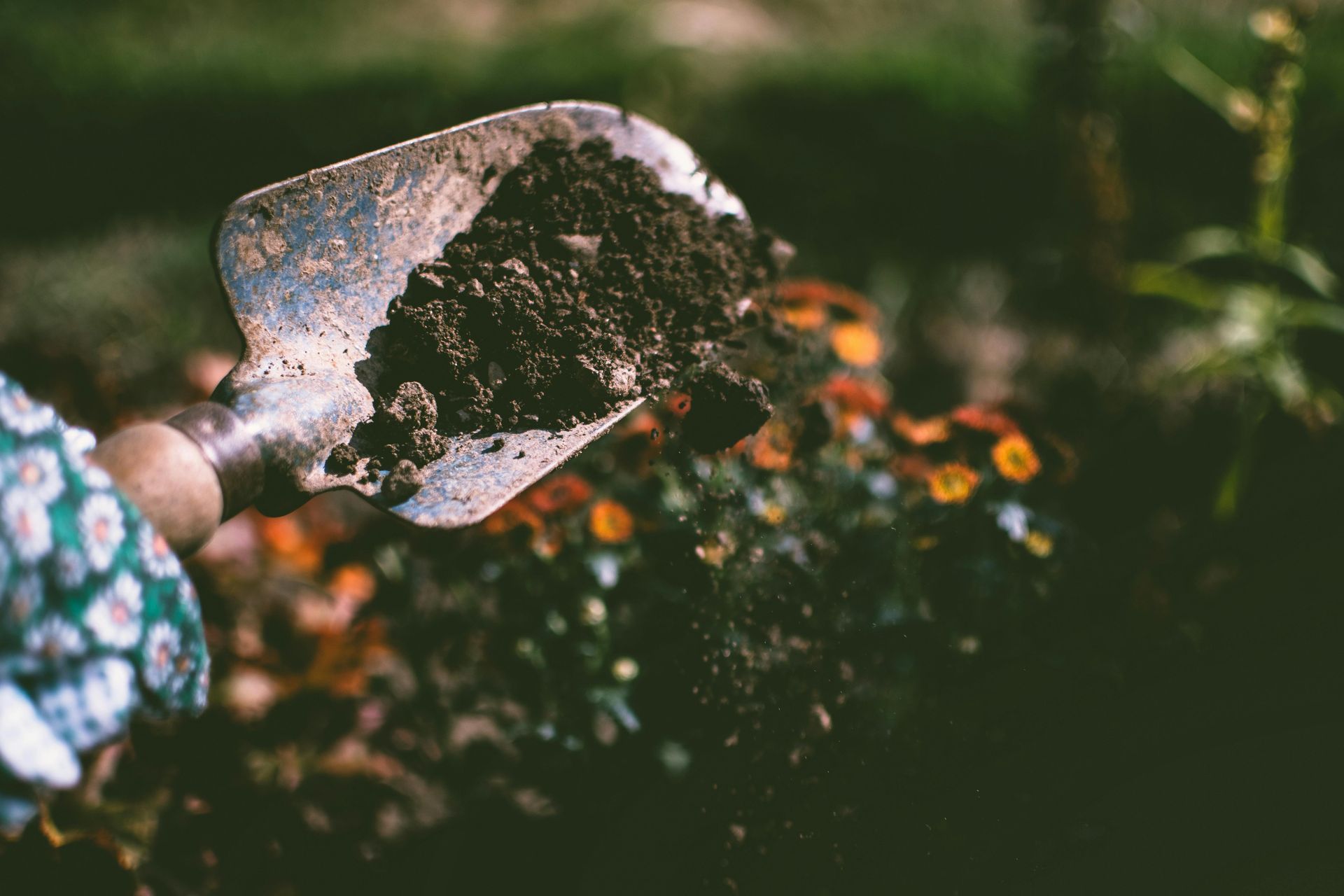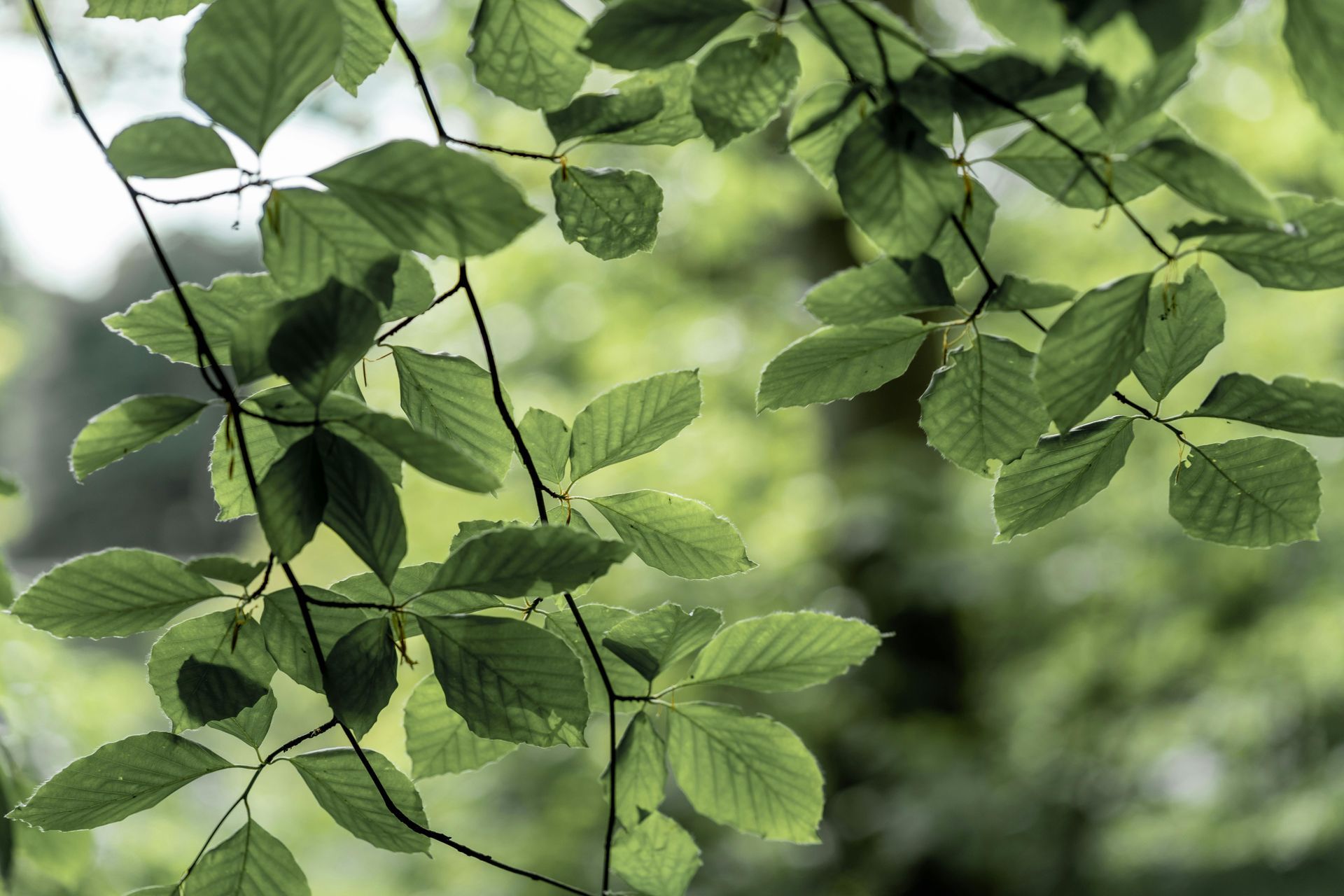The Guide to Planting Trees in the Fall
For most homeowners, the spring season is associated with planting trees, shrubs, and flowers; in fact, spring is the busiest season in the garden and at garden centers for this reason. Bitterly cold winters and the lack of vegetation gets us excited to refresh our gardens with bright colors and landscape our yards with new plants. Spring can be a great time of year to plant, depending on where you live. However, if you want your new trees to survive and thrive for years to come, you’ll find that fall is an excellent planting time—even better than spring. Trees are fresher in the fall, and the selection at the store is better. Planting in fall also gives them time to prepare for the harsh summer months. Here’s everything you need to know about planting a tree!
What are the benefits of fall planting?
Allows extra time for the tree to become established.
When you plant a tree in the fall it has more time to establish before the stress of the summer season. It can work to establish its root system for many months before it must deal with hot temperatures and drier soils of summer. Because summer is usually the most stressful time for newly planted trees, giving your tree as much time as possible before the stress of summer is ideal.
Cooler temperatures
As the heat of summer lets up and autumn days arrive the cooler temperatures help reduce the stress on trees. Tree roots grow best in cool soil. If the soil temperature is above 50 degrees F the roots of the tree are still growing. In more mild areas this could mean that your newly planted trees have a few months of root growth before the colder winter weather arrives. This extra time enables them to get established more easily and quickly before going dormant.
Fall rains
One of the challenges of planting in the spring is that summer in many regions tends to be hot and dry. Because newly planted trees need plenty of water, you might find yourself having to go out and water your trees on a regular basis. Failing to do so could result in dead trees by the end of the season.
In contrast, the fall weather in many areas brings with it a great deal of rain. Combined with the cooler temperatures this means your trees won’t need as much watering from you as they would in the spring and summer.
Less maintenance
Because trees go dormant in the winter, they require less maintenance than trees planted in the spring and summer. The autumn rains easily keep them naturally watered, the cool soil temperatures encourage root growth, and these extra months help set it up for a very productive growing season the following year.
Best way to buy trees in Pennsylvania
When buying trees for your space, you have a few different options in terms of what kind of nursery-grown tree you get:
Bare-root trees are grown in the field and then dug while they are leafless in either fall or spring. Fall-dug trees may be sold immediately or stored with their roots packed in moist material. Root loss during digging is a drawback; however, these trees can be easily and inexpensively shipped, giving you a wider selection if you can’t go to local garden center. And because you can see the roots, you can easily assess their condition. Bare-root trees also tend to be the cheapest option because they are the most lightweight.
Container-grown trees spend the first part of their lives in pots. The potting mix is lighter than field soil, so such plants can be shipped economically. Ideally, the plant spends enough time in the container to allow its roots to fill it. Watch out, though: Some vendors buy bare-root trees and pot them up for quick sale as container plants. Also bad are container-grown trees that have been left too long in their containers and become root-bound. Stop yourself from buying the largest tree possible; it should be no taller than three to four times the height of its container.
Balled-and-burlapped trees often have been dug from clay soil, the removal of which might lead to root loss. Thus, such a tree is lifted with a ball of soil that is then wrapped with burlap. Clay soil holds together better than lighter soils, but it is also heavy, so the weight and the delicacy of the root ball make mail-order shipping of these trees unfeasible; they must be bought locally in most cases. Plant selection is therefore more limited. The weight also makes it harder to plant these trees yourself without the use of machinery, depending on the tree’s size.
How to plant trees in the fall?
Maintaining a healthy tree for years to come includes planting the right tree in the right place. Before planting, evaluate your space to make sure it will be suitable for your tree as it grows. Be careful of planting too close to surrounding structures. You’ll also want to consider how much sun, shade, and moisture the tree will get at the planting site. It’s not a bad idea to call 811 before you dig to avoid planting on underground utility lines. This free service can be a timesaver down the road. Proper tree care starts by properly planting your tree.
- Find the right planting site. Pay attention to the tree’s needs for sunlight and soil drainage.
- Check the soil. If it is ready for digging, it will be just moist enough to crumble. If the soil is not ready, wait for it to dry or water it.
- Mark out the proper hole. New roots establish more quickly in a hole that is roughly twice the diameter of the root ball and no deeper than necessary to let the tree stand at the same level as the surrounding soil—or higher, if the tree is to be planted atop a mound for proper drainage. The base of the tree shouldn’t be lower than the surrounding soil level, as water will pool around the trunk, possibly leading to rot.
- Remove the sod if planting in grass. Cut the surface vegetation with a shovel or grass edger, then work a flat-bladed shovel beneath the vegetation and lift it off. If you’re planting in an established bed that already contains a layer of mulch, scrape away the mulch from the planting site before digging the hole.
- Lay down a tarp to place soil on. Once you start digging the hole, you will need a place to put the dirt. Lay down a tarp or plastic sheeting so that soil doesn’t get into your lawn.
- Dig the hole. Taper the hole from ground level at the edges to the full depth at the center. Rough up the sides of the hole to break up any glazing from the shovel blade that might slow root penetration.
- Prepare the roots. If the tree is bare-root, cut back to healthy tissue any roots that are damaged or blackened by disease. Also shorten any lanky roots that do not conveniently fit into the hole. Shovel some soil into the hole to create a mound on which to spread the roots. Throw another shovelful onto the roots to steady the plant. If the tree is container-grown, slide it out of the pot. Untangle and splay out roots that outgrew the pot and were forced to grow in circles. Shorten any that are too long. If the roots are too tightly bound to untangle, make four 1-inch-deep slices from the top to the bottom of the root ball. Loosen the large roots and tease out smaller ones. If the tree is balled-and-burlapped, slide it right into the hole, being careful not to break the ball. Cut the string binding the burlap and peel the wrap as close to the base as possible. Natural burlap will decompose, so some scraps can be left in the hole. Synthetic material can strangle the tree, so cut away at it to remove as much as possible, without disturbing the ball.
- Fill in around the tree. Use a stick or your fingers to work the soil up against and in among the roots. Soil shouldn’t be packed in too tightly, as this can make it harder for the roots to find footing, but there also shouldn’t be any air pockets. When the hole is about halfway filled, spray down the soil with water to settle it. Wait for the water to soak in, then continue filling.
- Stake, if necessary. Plants that are 10 feet tall or higher and trees at windy sites should be staked for a year, until their roots grab firmly to the soil. Use soft material or padded wire where the support touches the trunk.
How to care for a newly planted tree
The two most important things you can do after planting trees are watering and mulching.
Your tree will require the same care no matter what time of year you plant. Always mulch a two to three-inch ring of mulch around the base of your tree—but don’t pile it against the trunk.
Water your tree right after planting, yes, even if it’s cold outside. During the fall your newly planted tree will still require watering. But it’s up to you to figure out how often and how much. Use a trowel to dig a 1-inch hole and feel the soil around your tree. if it’s moist to the touch, your tree doesn’t need water. Tree watering will vary for each tree depending on its size, species, climate, and location. Proper watering within the first year of planting your new tree is critical. What type of soil you have in your yard as well as the rainfall you receive will determine how often to water your tree. A good rule of thumb for fall planted trees is to simply water the tree one a week until the ground freezes, even after the tree has lost its leaves. Then, when spring arrives you can follow the above suggestions for making sure it’s getting at least 1 inch of water per week throughout the following season.
What are the best trees to plant in the fall?
The best choice for fall planting is deciduous trees, which are trees that lose their leaves in the winter. They don’t need as much water in fall and winter because they’ve shed their leaves and don’t have to feed them. Instead, they spend their energy on establishing their root system.
Be careful about planting evergreen trees too late into the fall. Because they don’t lose their leaves, they need a more established root system heading into winter so they can keep their leaves hydrated throughout the winter. Planting evergreens in the late summer and early fall is best.
The list of trees you can plant in the fall is endless, here are some.
Buckeye – These majestic trees can be planted from the seeds that fall in early autumn. Soak them for 24 hours before planting just under the soil surface.
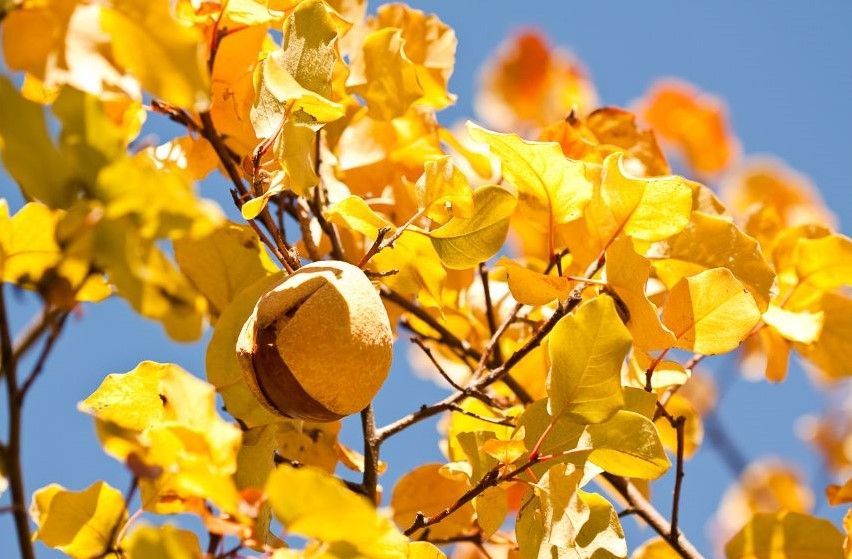
Maple – There are dozens of types of maples to choose among. For small gardens, consider Japanese maple with their deeply cut leaves and fiery fall color. Sugar maple – beloved giants with the sweet syrup – require a big backyard.
Crabapple – If you plant crabapple trees in a full sun location in autumn, they will get a good start. They prefer loamy, well-drained soil. Look forward to their beautiful spring flowers.
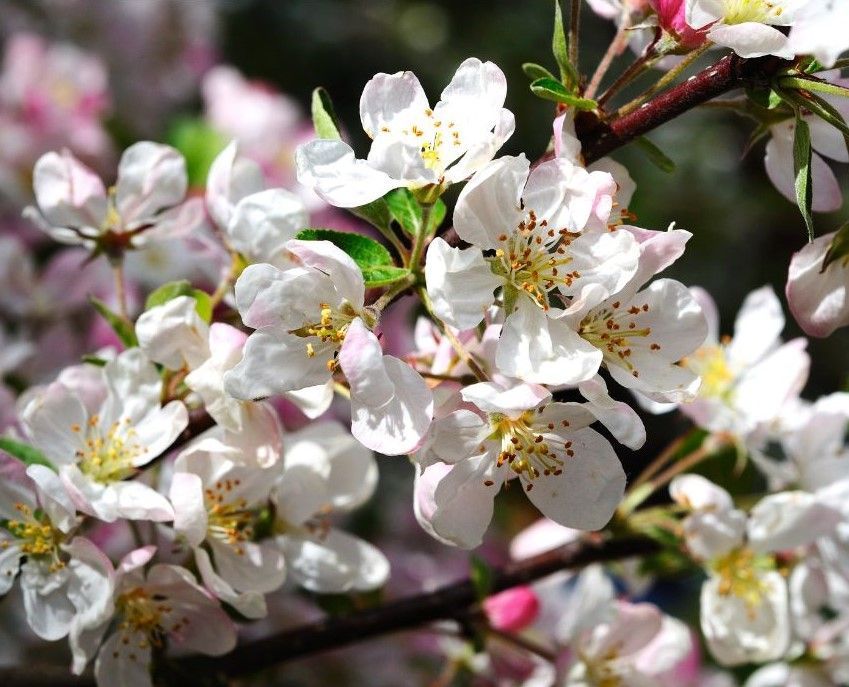
Linden – This is a tree that plants particularly well in fall. And as they grow and mature, they are at their most attractive in autumn with wonderful golden fall foliage.
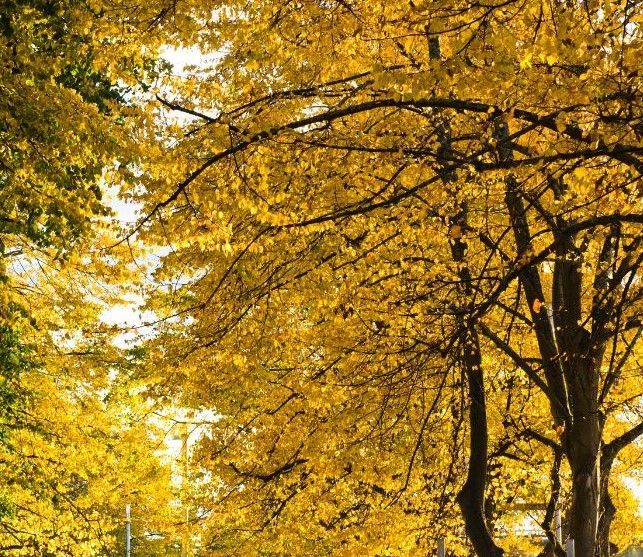
Spruce and pine – Most evergreen trees do best when planted in autumn. Both spruce and pine are among those trees you can plant in fall. They are cold hardy and can thrive in cold regions in poor soil. Pines, spruces and others - sometimes lose older needles during the fall.
Elm – They prefer full sun or partial shade and moist, well-drained fertile soil. If planted in the fall, don’t amend the soil unless it's very poor. Add a little compost to the fill dirt. Wait until next spring to fertilize an elm tree.
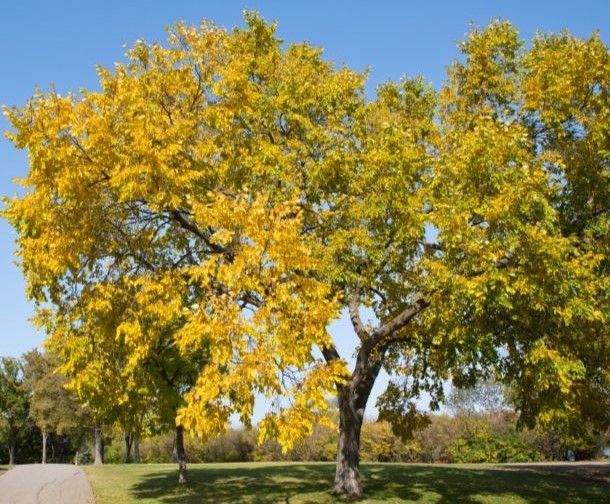
Pocketbooks and Planting Trees in the Fall
This last reason has very little to do with the trees, but our pocketbooks are important too! Most nurseries want to clear their stock before winter, so sale prices are easily found, and if you plant several trees, such as for a screen or hedge, the savings are substantial. Free shipping is often included, so what looks like a higher price turns out to be a real bargain, once you factor that in.
Nurseries price their stock in spring, based on its size. By fall, the plants have grown, but the prices have not, so that ‘4-foot’ plant may be closer to 5-feet by now, yet the price will not have gone up.
With a little tender loving care your new trees will be off to a solid start.
References:
Why It’s Great to Plant Trees in the Fall - Arbor Day Blog
Tree-Planting Tips: How to Plant Trees in Fall | The Old Farmer's Almanac
5 Best Trees To Plant In Fall: What Trees Can Be Planted In The Fall (gardeningknowhow.com)
Everything You Need to Know About Planting Trees in Fall - Eco Tree Company
bare root trees - Search (bing.com)
container grown trees - Search (bing.com)
balled and burlapped trees - Search (bing.com)
The Alder Tree - Identify, Grow, And Care For Alder Trees (diys.com)
Elm Tree Care - Information On Planting An Elm Tree And Its Care (gardeningknowhow.com)
Fall – the Ideal Season for Planting Trees | The Tree Center™
Images - Canva
Check out the latest:









